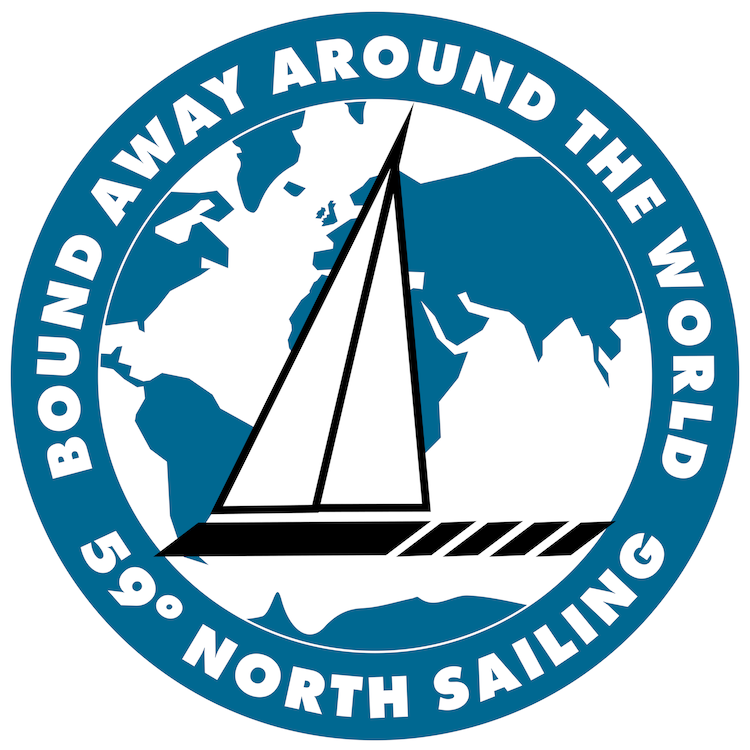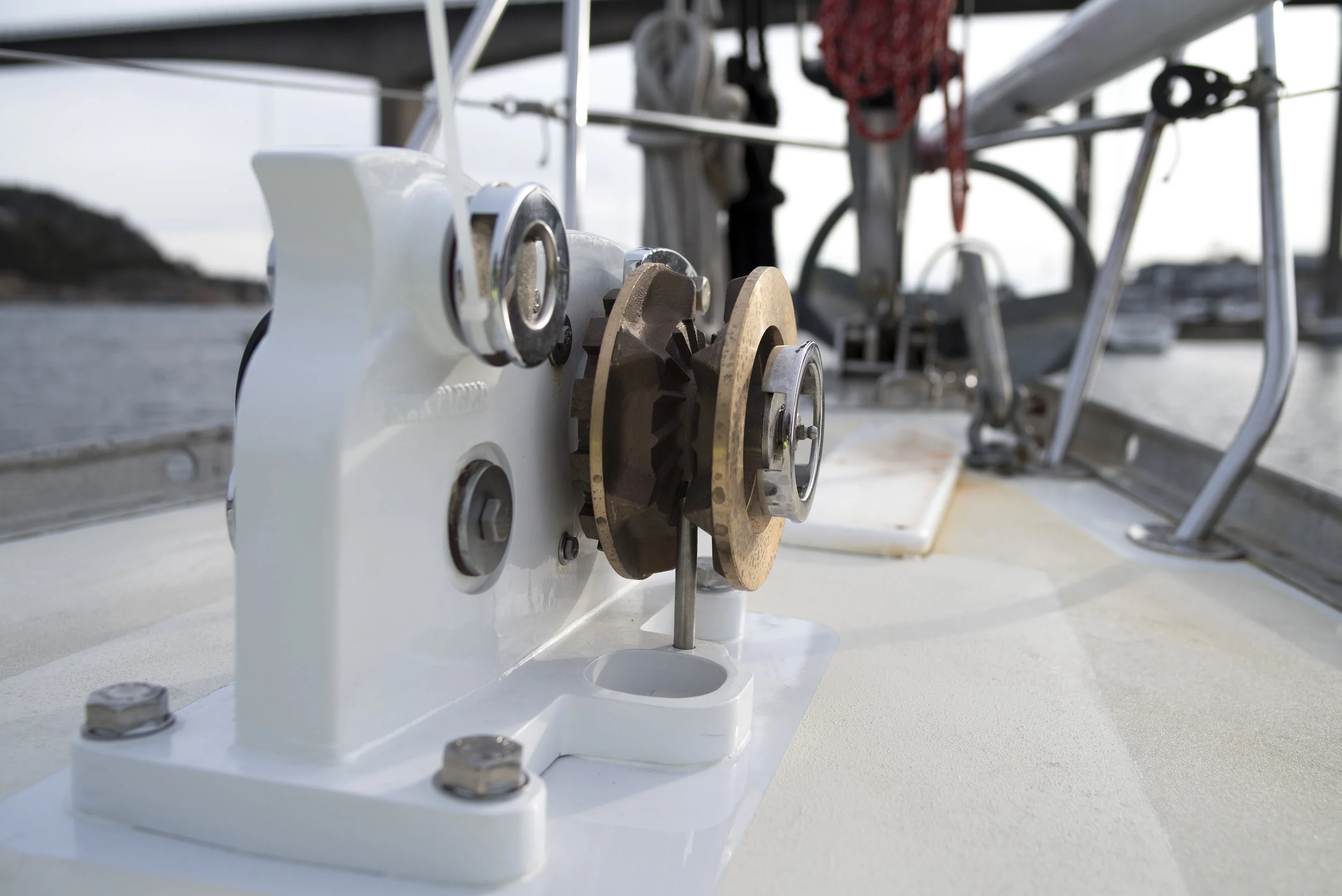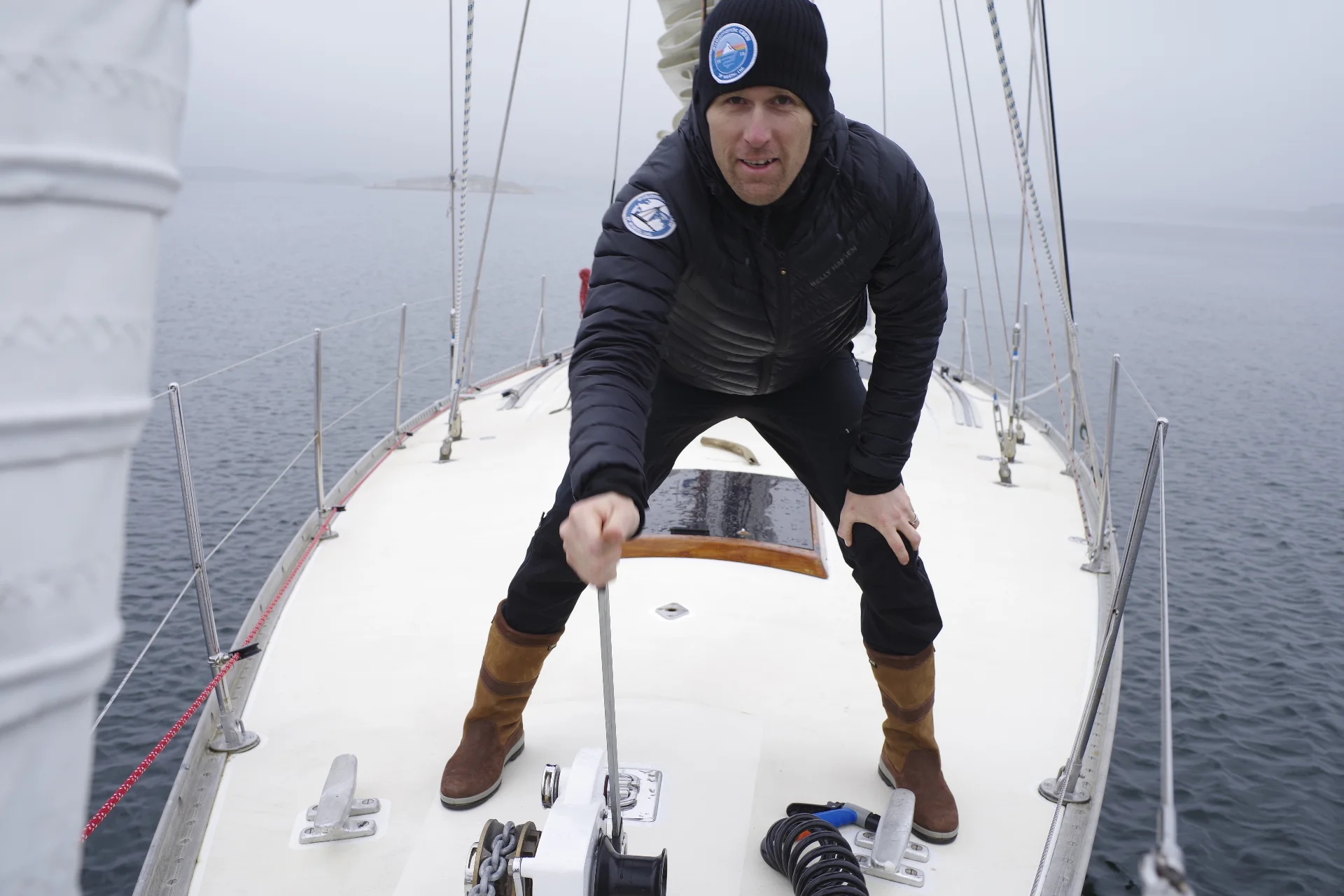All the gear we use on Isbjorn & Ice Bear has been chosen by us, usually after having been recommended by people with way more experience than us! Some of the gear listed below is sponsored, but only after we've reached out to the companies, not vice versa. If it's not noted as being sponsored, we've bought it like anyone else.
OSR Cat. 1 Safety Equipped
“Races of long distance and well offshore, where boats must be completely self-sufficient for extended periods of time, capable of withstanding heavy storms and prepared to meet serious emergencies without the expectation of outside assistance.”
Safety is our #1 priority and we take it very seriously. Both boats are maintained & equipped to at least World Sailing (formerly ISAF) Offshore Special Regulations (OSR) Category 1 standards for offshore racing. They are defined above.
In addition to standards on how the boat is actually built and how some of its structure is put together & maintained, the Cat 1 standards apply vigorously to all onboard safety equipment, from personal PFDs to EPIRBs and liferafts. These standards are very high, often exceeding individual country Coast Guard regulations by a large margin. All safety gear is not created equal, by a longshot, and World Sailing’s goal is to ensure folks going offshore meet certain standards.
You can download the complete PDF of the OSR Cat. 1 guidelines by clicking here. The only level higher than Cat 1 is Cat 0, geared more towards Southern Ocean & round-the-world racing. Isbjorn indeed even fulfills some, but not all, of the Cat 0 standards. Click here for the complete OSR Cat. 0 guidelines.
Click here for a handy Cat 1 inspection checklist.
Safety Equipment Summary
Viking RescYOU Pro 8-man liferaft, with <24hr. kit
Helly Hansen 'Racing' Inflatabe PFDs
Integrated MOB1 AIS transmitters
Weems & Plath CrewWatcher MOB Alarms
Kong Double Tethers
Reflective jacklines port & starboard
DanBuoy3 MOB inflatable pole
Lifesling MOB recovery device
70' Throw Rope
SOLAS flares
Full medical kit including extensive pharmacy
Sails & Rigging
Hydranet Working Sails
Isbjorn is equipped with the highest quality offshore cruising sails money can buy. We aim to set an example & be the best of the best. Our three working sails were designed by Chuck O'Malley of Chesapeake Sailmakers in Annapolis, and built in South Africa. They are Dimension Polyant 'Hydranet' woven cloth (a blend of dacron & dyneema fibers), built in a tri-radial construction. Our inventory includes the following:
Fully-battened mainsail with 3 deep reefs (double-line slab reefing)
135% genoa, tri-radial, set on roller-furler with 2 reinforced reef patches on tack & clew.
105% genoa, tri-radial, set on roller-furler
Heavy-weather inner forestaysail, set on Colligo Dux removeable inner forestay.
Asymmetric spinnaker, set on the pole similarly to a symmetric spin OR with an ATN 'tacker' at the bow.
Standing Rigging
Isbjorn's standing rigging is 1x19 stainless steel wire, with Sta-Lok mechanical fittings at deck-level & swaged fittings aloft. Except for the backstay, where it's a 11mm Colligo Dux synthetic stay. We also have a removeable Dux inner forestay, and removeable Dux running backstays, attached to the mast at the upper spreaders with Colligo 'cheeky tangs.'
Running Rigging
Our running rigging is mostly 10-14mm dyneema cored double-braided rope. We use a mix of Rutgerson, Harken & Antal deck hardware, and Lewmar winches.
Where possible, most of our attachments for blocks, strops, etc. are dyneema or Colligo soft shackles, to save the wear and tear you get from metal-on-metal shackle connections.
Going Aloft
We carry an ATN mastclimber bosun's chair for going aloft. I can use this on my own, but 9 times out of 10 we use just the chair part of it, and I free-climb while Mia takes up slack on a halyard below. It looks, and is, extremely simple, but is the most comfortable chair I've ever used, and I used to work as a rigger!
Heavy Weather
Isbjorn stands up to a near wipeout in 35+ knots of wind, tripled-reefed, mid-Atlantic. Summer 2017.
In the 20,000+ miles we've sailed in two and a half years on Isbjorn, we've only had sustained winds over 30 knots once, while crossing the Atlantic in summer 2017 (see photo above). But we're ready if it does blow.
Reefing
We adhere to the three (or sometimes 4) reefs in the mainsail, foregoing the trysail like Skip Novak, as it's easier to set a sail already there (but you have to be careful). Isbjorn came with a separate trysail track and trysail, so we keep it onboard, but we'd likely not use it.
We've also got the removable Dux inner forestay with hank-on forestaysail, which we've rigged several times, but never in anger. We use this sail if we have to heave-to (which we've done on occasion to rest), as we can more easily lead the sheets in such a way as to avoid chafe.
Jordan Series Drogue
For the true survival storm scenario, which we hope to never encounter, we carry a Jordan Series Drogue we bought from Oceanbrake, with dedicated chainplates installed on either side of the transom. The drogue lives coiled in an IKEA bag in the lazarette, ready to deploy at a moment's notice.
Engineroom & Charging
Isbjorn came with a Yanmar 4jH3E engine when we bought her, but in winter 2017 we're replacing it with a Beta Marine 60HP diesel, a marinized Kubota tractor engine. This will power an 18", 3-blade MaxProp. 12V power will come from the Beta-supplied 175-amp alternator. Unlike the photo, our's will be painted 'Kubota Blue' after the little 16-HP Beta we installed on Arcturus before we sold her. I have bad luck with red engines ;)
Offshore, Isbjorn gets all the electricity she needs and then some from our Watt & Sea hydrogenerator, that I wrote about for morganscloud.com. In short, it works GREAT for us since we're doing so much sailing!
We've also opted to install a super-high-output alternator. The Beta 60 now powers a custom 250-amp alternator, with external rectifier & external regulator. Essentially, the 'rectifier' part being external allows the alternator case to fit in the same standard spot as a smaller output unit, but with that massive amperage! With our 915-aH battery-bank, we can re-charge from the usual 60% to 85/90% in under an hour. Our friend Bruce Schwab of Ocean Planet Energy helped us spec and install the unit.
Batteries are 6-volt Trojan J-305 AGMs, of which we've got 6, for a total 12-volt bank of 915 amp-hours. We have a 12-volt Lifeline AGM isolated start battery for the engine.
Anchoring & Warps
Isbjorn anchored in Loch Scavaig, Isle of Skye, Scotland.
Bower Anchor
We adhere to the Steve Dashew school of anchoring - put the weight in the anchor, and use a lighter rode. To that end, we bought the biggest Rocna that would (barely) fit on the bow, a 40kg/88lb. monster. While we've not had many gnarly anchoring situations (yet), we've not once had to re-set the anchor, nor has it even dragged so much as an inch.
The anchor rode is 120' of 3/8" G40 chain, to which another 300' of 20mm" 8-strand plaited polyester rope is spliced, making a total primary rode length at 420'.
Stern-anchored in Mollön on the west coast of Sweden.
Second Anchor
We don't carry a second bower anchor, but do carry two additional anchors on the stern & in the lazarette. In Sweden, stern anchoring and running warps from the bow ashore is very popular and convenient. For this we use a slightly undersized 20kg/44lb. Bruce-type anchor, mainly because it stows so easily on the stern rail. It's got about 15' of 3/8" chain, then 300' of 9mm dyneema, with bungee cord buried inside it's entire length to give it a little stretch. This was custom-made for us by Colligo Marine. We keep a second 300' coil of bungee-cored dyneema on hand as a spare warp.
Just in case we need to set two BIG anchors, we've also got a 21lb. Fortress FX-37 aluminum anchor disassembled and stowed away in the lazarette.
Windlass
We're going old-school on the windlass and reverting to a new-old-stock Simpson Lawrence Seatiger 555 manual windlass. We bought it from John at slspares.com, who was extremely patient in working me through my anxieties, and had the thing shipped right to us in Oban. I like the exercise provided by a manual windlass, and the simplicity. They don't make these anymore, but John will build one from leftover new parts that he's collected since the factory shuttered.
Clothing
Foulies
Mia & Andy wear almost exclusively Helly Hansen clothing on the boat, from base layers to their Aegis 'Race' foulies. We've used Helly Hansen gear since we started sailing together over 10 years ago, and recently became 'ambassadors' for Helly Hansen. All of our crew get a discount on HH gear and apparel once they sign up with us!
Use Wool!
We use a LOT of real wool stuff too, as it's the only thing that stays warm when wet. We love collecting hand-made wool sweaters and hats from the places we visit, like Fair Isle in Scotland!
Our sleeping bags are Sierra Designs 'dri-down'.
Gloves
The gloves we wear in more temperate/cooler climates are Seal Skinz Ultra Grip, though we'll see how they fair in the Arctic. Up north, we'll use what the fisherman use - wool liners inside rubber dishwashing/work gloves. Simple, waterproof & effective.
Boots
We've worn Dubarry Ultima boots for the past seven years (I've got 3 Atlantic crossings on mine), and they're flawless! Warm, dry and grippy, I woudn't wear anything else. And unlike the old-school rubber boots, they're not bulky, and they're comfy enough to wear to the pub after a passage. They're not cheap, but if you sail a lot, they're more than worth it.
Navigation, Instruments & Comms
The 'Captain', Andy's Dad Dennis, on RADAR watch in Sweden.
Paper Charts & tools
We're pretty old-school when it comes to nav, and carry paper charts for all of our primary destinations (ie, places we intend on sailing to). Andy teaches celestial navigation, so of course we have onboard a sextant, Nautical Almanac & the required HO 249 sight reduction tables. We also carry electronic charts for nearly the entire world and use them within our iPad's SeaPilot software. All of our binoculars, plotting tools, clocks, barometers, etc. come from Weems & Plath, whom we've used for years. W&P is currently our presenting sponsor on the podcast.
Electronic Charts // Radar
Isbjorn no longer carries a built-in chart plotter. In winter 2017/18, we refit with a new Furuno 1835 standalone RADAR system mounted belowdecks at the nav station. We'll have two redundant iPad's running SeaPilot software, and of course the paper charts. The iPad is in our view the best solution for electronic navigation - cheap, replaceable & portable.
SatComms
Our long-distance comms setup includes an Iridium 9555 sat phone handset kept in a waterproof Pelican case, and which can come with us if needed in an abandon ship scenario. We connect that to the XGate email app on the iPad via the RedPort Iridium Optimizer mini wifi station. The phone is primarily used to download GRIBs to Weather 4D 2.0 (see link below), and is of great use in emergencies like when Andy got appendicitis offshore!
iPad Apps
Some iPad apps we love include:
iPolar
WatchMate AIS app
Instruments
Right now Isbjorn has 12-year-old Raymarine ST-60 instruments, including wind, depth, speed & rudder angle (my favorite, believe it or not) which came installed when we bought her. They're networked into the Raymarine autopilot, which, knock on wood, works flawlessly (though is not often used, since we hand-steer a lot with six crew aboard).
I'm torn about whether or not to replace these instruments and the autopilot during our upcoming winter 2017/18 refit....they're nice to have, but not mission critical, so they'll probably stay until they fail.








